
Planning a successful event for animal sanctuaries requires a significant attention to detail and thoughtful consideration throughout the process. This is even more important for any event that involves the participation of children or other minors in order to ensure their attention, health, emotional well-being, and safety! For sanctuaries looking to evaluate and improve their event planning prowess, this resource explores a staff planning document for a successful event at a farmed animal sanctuaryAn animal sanctuary that primarily cares for rescued animals that were farmed by humans..
By outlining an event in detail, sanctuary staff and volunteers can ensure it will be engaging, appropriate, and impactful. The following planning document was shared from Luvin Arms Animal Sanctuary as an example of how detailed the planning process can be.
Let’s Take A Look At The Planning Document
Event Title: Youth Valentine’s Day With Farmed AnimalsA species or specific breed of animal that is raised by humans for the use of their bodies or what comes from their bodies.
Who: Youth, specifically geared toward ages 5 through 12 years old
What: Finding love for farmed animals, including:
- A Connect Tour to meet residents. (1 hour, 30 minutes)
- Writing love letters and “giving our hearts” to residents (30 minutes to start). This might include action items such as “how will I show my love for you and other farmed animals?” (education about food choices and other ways we can show our love for farmed animals)
- Watching Charlotte’s Web. (1 hour, 30 minutes)
- At the end, participants will read their love letter to the resident they wrote it to and potentially take a picture or video in front of the residents with their love letter.
When: 9:30-3pm, February 15th
Where: Luvin Arms Animal Sanctuary
Why: To help youth think critically about farmed animals and why and how we can love them!
Detailed Schedule Of Events
9:30am – Check-in
- Provide a list for parents to sign who do not give permission to have photos or videos of their kids shared on social media.
- Attendees make their own name tags.
- Introduce schedule of activities for the day:
- Meet some ambassador residents, hear their rescue stories and learn how cool their species is
- Write love letters or make Valentine’s Day cards for residents and make enrichment treats (watermelon hearts) as the main activity
- Watch Charlotte’s Web together and show love to our farmed animalA species or specific breed of animal that is raised by humans for the use of their bodies or what comes from their bodies. friends by eating a delicious plant-based meal
- Show love for our residents by reading our letters to them and giving them the watermelon hearts
9:45am – Introduction to the tour, starting the tour as early as possible to leave time for love letters
- Confirm with Care staff that a youth group can go in with residents at 10:00am (pigs should be done eating by then)
10:00am-11:15am – Connect Tour
- Sing Happy Birthday to Felix!
11:15am-11:30am – Break and preparation for the next activity
- Wash hands and go to the bathroom
- Stretch/ shake-out break
- Briefly ask the questions: “What did you think of the tour? Did you learn anything that surprised you, or did any of the residents surprise you?”
11:30am-12:30pm – Introduce the love letters, decorating Valentine’s Day cards, and watermelon hearts project. Give everyone some uninterrupted time to work on it before starting the movie.
- Love letters
- Show prototype with:
- Non-Violent Communication Appreciation structure
- 1- Dear (Person), When I saw/heard (Observation), I felt (feelings), because it helped me meet my needs for (needs).
- Must have needs and feelings listed out on the tables for this.
- 1- Dear (Person), When I saw/heard (Observation), I felt (feelings), because it helped me meet my needs for (needs).
- Non-Violent Communication Appreciation structure
- Show prototype with:
- Option to include more:
- 2- What I love about (resident) and/or their species.
- Action item
- 3- How will I show my love for (individual resident and their species).
- Participants can choose if they want to incorporate option 1, 2, or 3, all 3 options, or do something completely different for their love letter.
- Provide three prompts on the whiteboard: objective for project, illustrated example on how to start, and possible directions to go in.
- Provide the option to use rough draft paper before writing on the final love letter.
- Decorate Valentine’s Day cards. Quickly show options for possible styling techniques, materials to use.
- Demonstrate how to make cookie cutter watermelon heart treats for pigs (We need to test this out first. Would the watermelon be easier to use if it was frozen?)
- Volunteers will walk around to help participants as they follow the objectives on the whiteboard.
- Other volunteers will get lunch and snacks ready.
12:30-2:00pm – Watch Charlotte’s Web
- Finish up love letters or Valentine’s Day cards
- Work on decorating cards to go with love letters
- Cut out watermelon hearts
- Eat lunch
2:00-2:15pm – Break and cleanup
- Stretch
- Clean-up materials and lunch
- Quickly finish anything that needs to be finished
2:15-2:30pm – Reflect on the movie
- Corrections
- The farm in Charlotte’s Web is not an accurate depiction of what farmsFor-profit organizations focused on the production and sale of plant and/or animal products. look like today.
- Sheep do not often like to be shorn, but they do probably feel better afterwards due to the excess wool in the summer.
- Rats are actually very social, intelligent animals.
- Studies show that rats would not leave their friend if a friend was trapped and they had the option to leave them for a treat.
- Pigs are intelligent as well.
- Studies of pig cognition.
- “What did the characters in this story teach us?”
- The humans started off by using the pronoun “it” to describe Wilbur. Further into the movie, Fern corrects her father by saying “Wilbur”, not just “the pig”. Language shapes the way we think about others.
- The sheep: Don’t follow, be an individual and think for yourself.
- Charlotte: Stay true to your word; she kept her promise to Wilbur.
- Doctor: Maybe we would be able to understand animals communicating to us if we listened to them.
- “What are some morals or lessons we can take away?”
- Everyone deserves love and respect, no matter who they are, what species they are, what they look like, or how big or small they may be.
- Charlotte referring to her web work: ”This isn’t for what you do, it’s for what you are.”
- Friendship and kindness will get you far.
- Everyone deserves love and respect, no matter who they are, what species they are, what they look like, or how big or small they may be.
- By raise of hands and tallying respondents, along with any other comments on board:
- How did the movie make them feel?
- How did it make them feel about animals who are farmed?
- Does anyone feel the need to help farmed animals more in their daily lives?
- Other possible social justice critical thinking questions:
- Why does Templeton not want other animals who are not of his species to call him a rat?
- Negative connotations
- What do you think rats would want to be called if they could chose how to name themselves?
- The same with pigs
- Can words be reclaimed?
- Why does Templeton not want other animals who are not of his species to call him a rat?
2:30-3:00 pm – Take a picture or video by residents who are matching their letter or card, and of everyone giving their hearts to the residents
- We might need to break up into groups to accelerate pictures and video process.
- Reminder to identify participants who are not to be filmed or photographed.
3:00 pm – Goodbyes, tell parents to watch on social media for pictures or videos of their kids reading love letters to residents and giving their hearts away.
- Attendees can take home their cards or donate them to the sanctuary. If donated, we can hang them in the Big Barn for the month of February.
Lunch Needs:
- Enough food for thirty people
Volunteer Needs:
- Find four youth-friendly volunteers we trust to help out
Budgetary Needs:
- Cost of watermelons
- Cost of food for lunch
- Cost of renting the movie
Materials Needed:
- Sign-up sheet for families who do not want pictures of their kids posted on social media
- Tacks to hang letters and cards in the Big Barn
- Printed out Valentine’s Day cards with residents on them
- Love letters and cards
- Color-themed construction paper
- Scissors
- Black and colored markers
- Colored pencils
- Regular pencils
- Crayons
- Printer paper
- Watermelon hearts
- Two watermelons
- Heart-shaped cookie cutters
- Towel
- Cutting boards
- Lunch
- Pizza (make sure to purchase soy and gluten free options)
- Ice cream (soy free)
- Juice/lemonade
- Some kind of snack, in case participants don’t want pizza
- Plant-based cheddar crackers
- Clean plates, cups and utensils
- Charlotte’s Web Movie
- Rent online
- Computer
- HDMI cord
- TV
How’d It Go?
The event planned above went off without a hitch, thanks to detailed planning and scheduling!
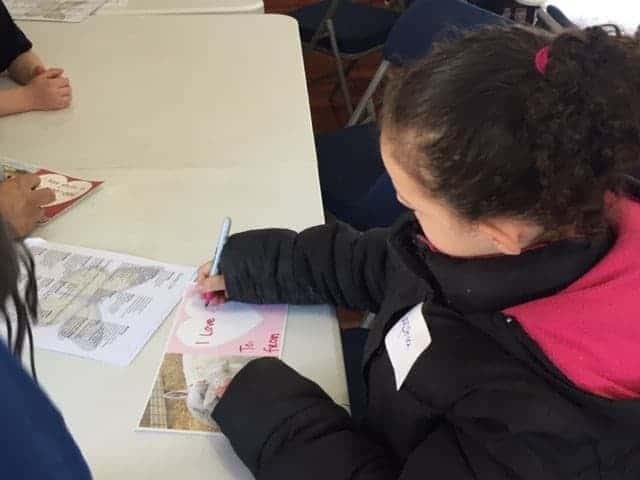
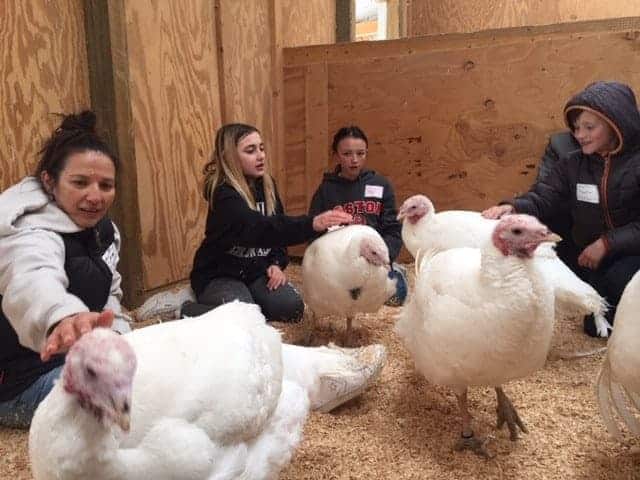
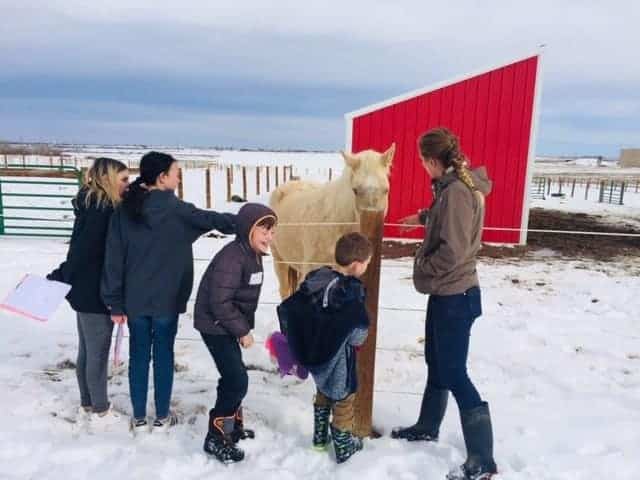
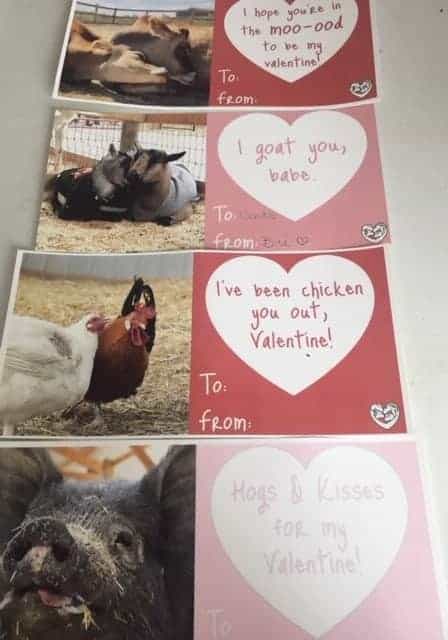
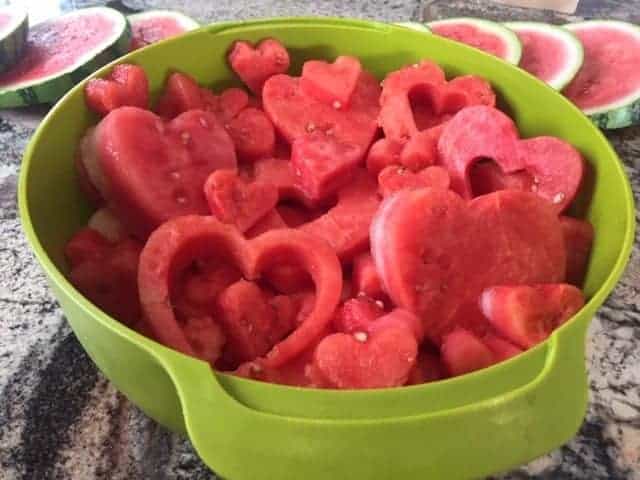
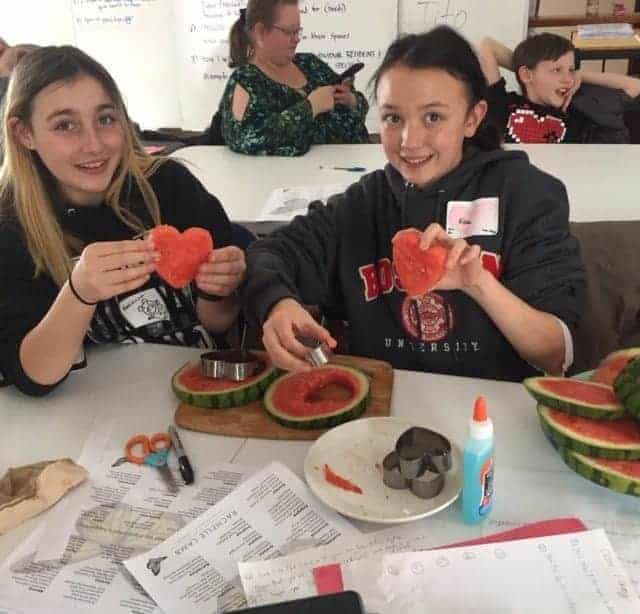
This resource was created with input from Alexis Miller, Education & OutreachAn activity or campaign to share information with the public or a specific group. Typically used in reference to an organization’s efforts to share their mission. Manager at Luvin Arms Animal Sanctuary. Does your organization have tips, knowledge, or experience you’d like to share with the global sanctuary community via The Open Sanctuary Project? Get in touch with us! We’d love to work with you!








